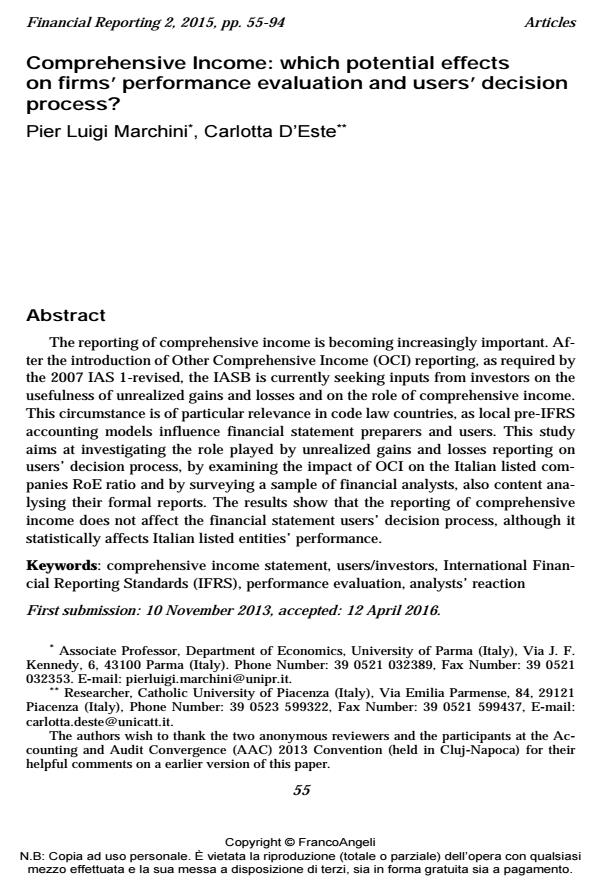Comprehensive Income: which potential effects on firms’ performance evaluation and users’ decision process?
Titolo Rivista FINANCIAL REPORTING
Autori/Curatori Pier Luigi Marchini, Carlotta D'Este
Anno di pubblicazione 2016 Fascicolo 2015/2
Lingua Inglese Numero pagine 40 P. 55-94 Dimensione file 371 KB
DOI 10.3280/FR2015-002003
Il DOI è il codice a barre della proprietà intellettuale: per saperne di più
clicca qui
Qui sotto puoi vedere in anteprima la prima pagina di questo articolo.
Se questo articolo ti interessa, lo puoi acquistare (e scaricare in formato pdf) seguendo le facili indicazioni per acquistare il download credit. Acquista Download Credits per scaricare questo Articolo in formato PDF

FrancoAngeli è membro della Publishers International Linking Association, Inc (PILA)associazione indipendente e non profit per facilitare (attraverso i servizi tecnologici implementati da CrossRef.org) l’accesso degli studiosi ai contenuti digitali nelle pubblicazioni professionali e scientifiche
The reporting of comprehensive income is becoming increasingly important. After the introduction of Other Comprehensive Income (OCI) reporting, as required by the 2007 IAS 1-revised, the IASB is currently seeking inputs from investors on the usefulness of unrealized gains and losses and on the role of comprehensive income. This circumstance is of particular relevance in code law countries, as local pre-IFRS accounting models influence financial statement preparers and users. This study aims at investigating the role played by unrealized gains and losses reporting on users’ decision process, by examining the impact of OCI on the Italian listed companies RoE ratio and by surveying a sample of financial analysts, also content analysing their formal reports. The results show that the reporting of comprehensive income does not affect the financial statement users’ decision process, although it statistically affects Italian listed entities’ performance.
Parole chiave:Comprehensive income statement, users/investors, International Financial Reporting Standards (IFRS), performance evaluation, analysts’ reaction
Pier Luigi Marchini, Carlotta D'Este, Comprehensive Income: which potential effects on firms’ performance evaluation and users’ decision process? in "FINANCIAL REPORTING" 2/2015, pp 55-94, DOI: 10.3280/FR2015-002003